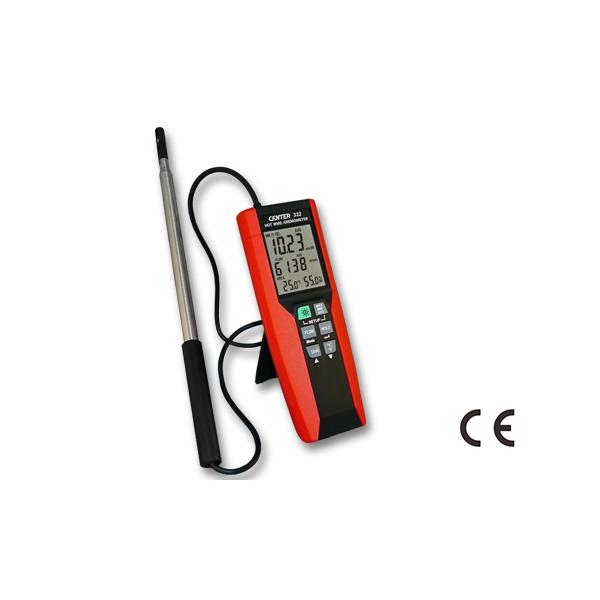How to Maintain and Take Care Of Your Anemometer to Ensure Durability
How to Maintain and Take Care Of Your Anemometer to Ensure Durability
Blog Article
All You Required to Know About Anemometers: How They Function, Why They Matter, and Where to Make use of Them
Anemometers, though often forgotten in the realm of clinical tools, play an important role in numerous areas, offering important understandings into wind speed and air movement patterns. Comprehending the mechanics behind these devices is necessary for anyone looking for to harness the power of this information. From meteorologists tracking climate patterns to designers creating structures with wind tons in mind, the applications of anemometers are diverse and far-ranging. As we dig right into the complexities of anemometer technology, we will certainly reveal the inner workings of these gadgets, their relevance, and the key considerations when picking the best anemometer for details applications.

Anemometer Fundamentals
A necessary tool utilized to gauge wind rate and instructions, the anemometer plays an essential function in meteorology and numerous industries. An anemometer generally consists of 3 or 4 mugs that turn in the wind, a vane that points right into the wind, and sensing units to track the turnings or motions. By computing the turnings or motions over a particular period, the anemometer can identify wind speed. The vane helps figure out wind direction by directing right into the wind, providing useful information for weather condition forecasting, aeronautics, maritime operations, ecological monitoring, and wind power applications.
There are different kinds of anemometers readily available, including mug anemometers, vane anemometers, hot-wire anemometers, and sonic anemometers, each with its special functions and applications. Cup anemometers are typically made use of for fundamental wind rate measurements, while vane anemometers are preferred for directional dimensions. Hot-wire anemometers appropriate for low airspeeds, and sonic anemometers are excellent for high-precision dimensions in study and industrial setups. Recognizing the essentials of anemometers is necessary for accurate wind data collection and analysis throughout different markets.
Principles of Anemometer Operation
Structure on the fundamental understanding of anemometer fundamentals, the concepts of anemometer procedure illuminate the technicians behind wind rate and direction dimensions. Anemometers operate on the concept of air movement influencing a sensing unit, causing it to rotate. Cup anemometers, for circumstances, have 3 or even more mugs that record the wind, creating them to rotate faster as the wind rate boosts. The rotation rate is then exchanged a wind speed dimension. Vane anemometers, on the other hand, utilize a tail or a probe that straightens itself with the wind direction, offering a measurement of wind instructions based upon the alignment of the sensing unit. Hot-wire anemometers count on a warmed wire that cools as wind overlooks it, with the price of cooling down establishing the wind speed. Ultrasonic anemometers step wind rate and instructions by assessing the moment it takes for ultrasonic signals to travel in between transducers. Understanding these concepts is critical for exact and trusted wind measurements in numerous applications.
Significance of Anemometers
The significance of anemometers in weather forecasting and various markets can not be overemphasized. Anemometers play a crucial duty in determining wind rate and instructions, giving essential data for weather condition forecasting, environment researches, ecological surveillance, and air travel procedures. Meteorologists count on anemometers to collect accurate wind information, helping them understand weather condition patterns, anticipate tornados, and issue prompt cautions to the public. In sectors such as building, agriculture, renewable resource, and maritime operations, anemometers are used to optimize procedures, ensure security, and enhance performance. Wind ranch drivers make use of anemometers to evaluate wind problems and maximize power production from wind generators. In the maritime market, anemometers help ship navigating by providing real-time wind info to captains, helping them make informed choices to ensure risk-free voyages. In general, anemometers are vital devices that contribute considerably to security, performance, and notified decision-making in weather forecasting and a large range of sectors.
Applications Throughout Various Industries
In the eco-friendly power field, anemometers play an essential function in assessing wind problems for wind ranch positionings, ensuring ideal energy production. Industries like construction and mining make use of anemometers to monitor wind speeds, essential for security procedures, specifically when working at heights or in open-pit mines where strong winds can present risks. In agriculture, anemometers aid farmers in managing plant splashing by giving real-time data on wind rate to prevent drift.

Picking the Right Anemometer for Your Needs
Choosing the proper anemometer customized Resources to your particular demands is essential for obtaining accurate wind speed and instructions measurements. When choosing an anemometer, consider elements such as the designated application, needed dimension array, ecological conditions, and preferred features. For basic functions, a mug anemometer appropriates for determining wind rate, while a vane anemometer supplies wind direction information. Hot-wire anemometers are optimal for low airspeed dimensions, and ultrasonic anemometers use high precision and resilience.

Conclusion
Finally, anemometers play a crucial duty in determining wind rate and instructions throughout different industries. Recognizing the concepts of anemometer procedure is crucial for selecting the right device for certain needs. From meteorology to aeronautics, anemometers are vital tools for gathering accurate information and making certain safety in different applications. When selecting the most ideal device for measuring wind problems., it is essential to consider the value of anemometers in order to make educated decisions.
There are different kinds of anemometers readily available, including cup anemometers, vane anemometers, hot-wire anemometers, and sonic anemometers, each with its distinct features and applications. Cup anemometers are generally used for standard wind speed dimensions, while vane anemometers are preferred for directional dimensions. Hot-wire anemometers are suitable for reduced airspeeds, and sonic anemometers are optimal for high-precision dimensions in research study and industrial settings.Building on the my sources foundational understanding of anemometer fundamentals, the principles of anemometer operation elucidate the mechanics behind wind speed and direction measurements. For basic objectives, a cup anemometer is ideal for gauging wind rate, while a vane anemometer gives wind direction information.
Report this page